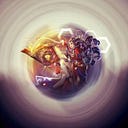Intro
Whether it is a solo queue game or a tournament finals match, the loading screen is no time for idling by. In this short article I will tackle how you should spend these precious few moments and why exactly, they’re so important.
My background
I previously worked as a Vainglory coach with Rogue, Hammers Esports, Divine Vendetta, and other professional teams. These days I have been aiding several EU, SEA, and NA Wild Rift competitive teams and coaching individuals in the community. I’ve also worked with other analysts on data collection/analysis(covered in previous articles found here.
The Problem
Lately I’ve noticed a habit that is solely lacking in every team and individual when I start working with them. My first thought was article time! :)
So what’s the big problem? It’s pretty simple — after the draft but before the game starts(post draft), players do not often spend time critically thinking about the upcoming game. This means the game is played on autopilot; i.e, the player does not adapt their play to the specific game situation and doesn’t know what to do at points throughout the game. Let’s take a look first at how this can be resolved on an individual level.
Individuals
Here are some of the questions you should ask yourself in the loading screen. Keep in mind that you don’t necessarily need to cover all the topics before the match; reminding yourself of these questions even while ingame is the best strategy for success.
- What is my lane phase goal(s)? (pre 5 min) This encompasses my lane matchup, my champion’s strengths (ex: if my champ had strong early 1v1 power, or ranged abilities to farm from afar, or scales well, or roams well, etc), possibility of jungle presence, and more.
- What is my opponent’s lane goal? Do I know for sure that the enemy wants to try to kill me early? How do I react to that? Do I know that the enemy hard scales and has a weak laning phase? Again, how do I play into that.
- How do I help my team win the game? What is my role in the mid to late game? Do I split push? Can I duel in the side lane? Do I group for teamfights? If I group for teamfights do I dive backline, do I peel carries, etc.
- If you can only ask yourself one thing, let it be this: what does my champion want to do, and how does that slot into our team composition? Another way to look at this is, what does your champion absolutely not want to do? This is most effective in ranked, although players in a competitive environment may also find this helpful.
With these questions raised, you go into the game with a plan. Each game will not be identical. Regardless, the plan will extend from the draft until a nexus has been destroyed. To stay on track of the plan is to keep your win conditions within reach.
Teams
Once the processes above become a habit, it is now your responsibility to be consistent game after game in order to become a better player. A team of players with the ability to ask these questions and adapt their game play to each situation will then be able to move on to more advanced team topics such as:
- How does our comp win? Do we scale? Do we need to snowball? When do we powerspike? These kinds of questions identify both when our team is strongest and what are our strengthes.
- How do we execute said win condition? How do we take advantage of our strengths? If we have a strong early game comp what do we need to capitalize on early? What lanes have prio? Who do we play around, how do we want to play around objectives, etc(i.e drake check). How does that change in each stage of the game?
- How does the enemy team win the game? What do they need met and how can we aim to not satisfy their win conditions? For example, when is the enemy strongest and how do we play to our strengths and not theirs (i.e.: if the enemy has a strong level 1, don’t invade or fight, if they have good 5v5 and we need to split, don’t 5 man teamfight, etc).
There are also some things you can cover later into the game, although make sure you don’t wait too late. The midst of the teamfight is not the time to discuss how you want to teamfight.
- How do we play teamfights (if you want teamfights)? Front to back? Diving? Who’s peeling? Who are we focusing/who is calling focus? Make sure your team is on the same page.
- What is our goal for this particular objective? Can we burst down this dragon before the enemy team gets here? How do we zone them away for contesting, can we turn and teamfight them? **THIS IS A CLASSIC BLUNDER** If you do not do this, chances are you will find yourself in more 50/50 smite fights and getting aced more than your winrate would appreciate :).
Conclusion
All in all, there is a lot to keep track of going into a MOBA match. Although this article isn’t specific only to Wild Rift, the applications are clear; if you go into a game with a plan, as a player or a team, you WILL perform better. Keeping that plan in mind through all parts of the game will provide you a more clear direction on what you/your team should be doing. No more auto piloting, no more trying to 1v1 the enemy darius as nasus lv1, and hello improvement.
Hope you all found this article informational! Special shoutout to pepetapia and quwasiq for editing and revising! If you have any questions/thoughts feel free to reach me at one of the following:
apo11o#5765
